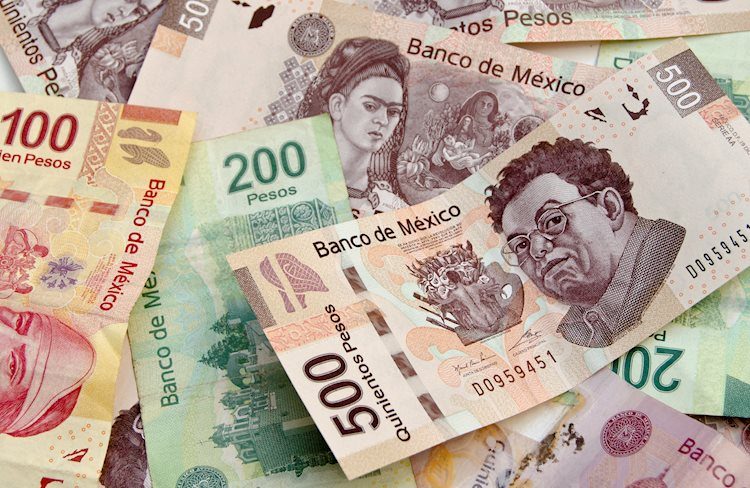The Mexican Peso depreciated against the US Dollar due to a strengthening USD and falling US Treasury yields. The IMF has downgraded Mexico’s GDP growth outlook for 2024 to 1.5%, citing capacity constraints and tight monetary policy. Meanwhile, US import prices fell sharply in September, with Fed’s Bostic optimistic about inflation hitting the 2% target.
US equities are fluctuating, with a focus on small caps outperforming the NASDAQ and S&P 500, causing emerging market currencies like the Peso to remain on the back foot. The IMF projects Mexico’s GDP growth for 2023 at 1.3%, with inflation approaching the Bank of Mexico’s 3% target. On the US front, import prices fell the most in nine months in September, while export prices also saw a decline.
Atlanta’s Fed President Raphael Bostic expressed confidence in the US economy, expecting inflation to hit the 2% target. He does not predict a recession but anticipates choppiness in inflation and strong employment. Retail sales, initial jobless claims, industrial production, and further Fed speakers are expected later in the week.
The Mexican Peso hit a five-week low against the USD as the USD/MXN reached 19.93, close to the 20.00 level. The IMF noted uncertainties around contract enforcement and the rule of law due to recent judicial reforms. Banxico’s survey suggests a 50 bps rate cut for the remainder of the year, with the USD/MXN projected to end at 19.69 and the economy expected to grow by 1.45% in 2024. US import and export prices declined in September, and investors anticipate 50 bps of Fed easing by year-end.
The technical outlook for USD/MXN shows a bullish trend with the pair surpassing 19.90 to hit multi-week highs. Momentum remains positive according to the Relative Strength Index (RSI), with the pair eyeing the 20.00 level. Resistance levels include the YTD high of 20.22 and potentially 20.50. On the downside, support levels are at 19.82 and 19.61, with further support at 19.10 and 19.00.
The Mexican Peso is influenced by various factors, including the performance of the Mexican economy, central bank policies, foreign investment levels, remittances, geopolitical trends, and oil prices. Banxico’s main objective is to maintain low and stable inflation levels by adjusting interest rates accordingly. Macroeconomic data releases play a crucial role in assessing the state of the economy, impacting the valuation of the Mexican Peso. As an emerging-market currency, the Peso tends to thrive during risk-on periods and weaken during market turbulence or uncertainty.











